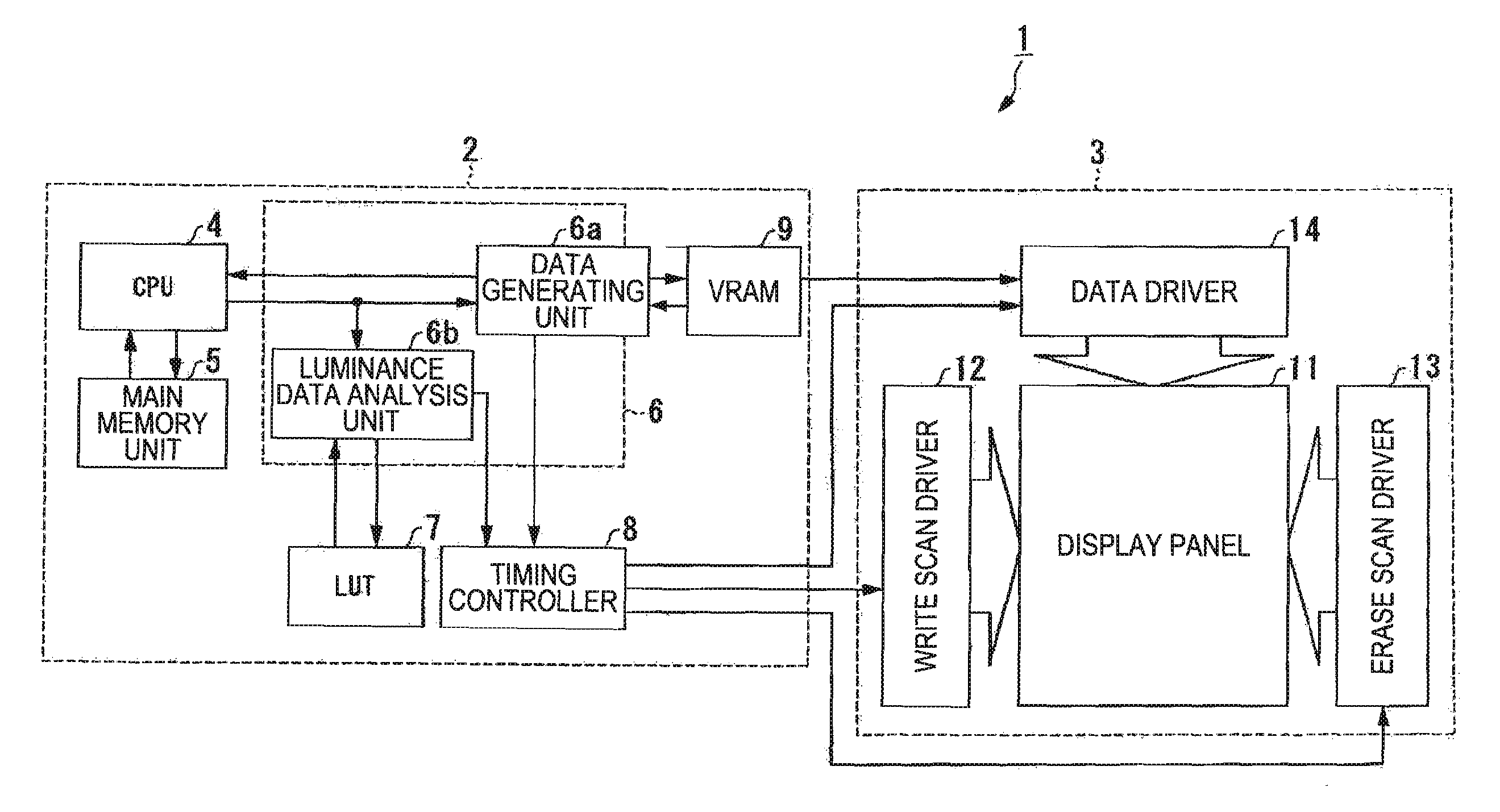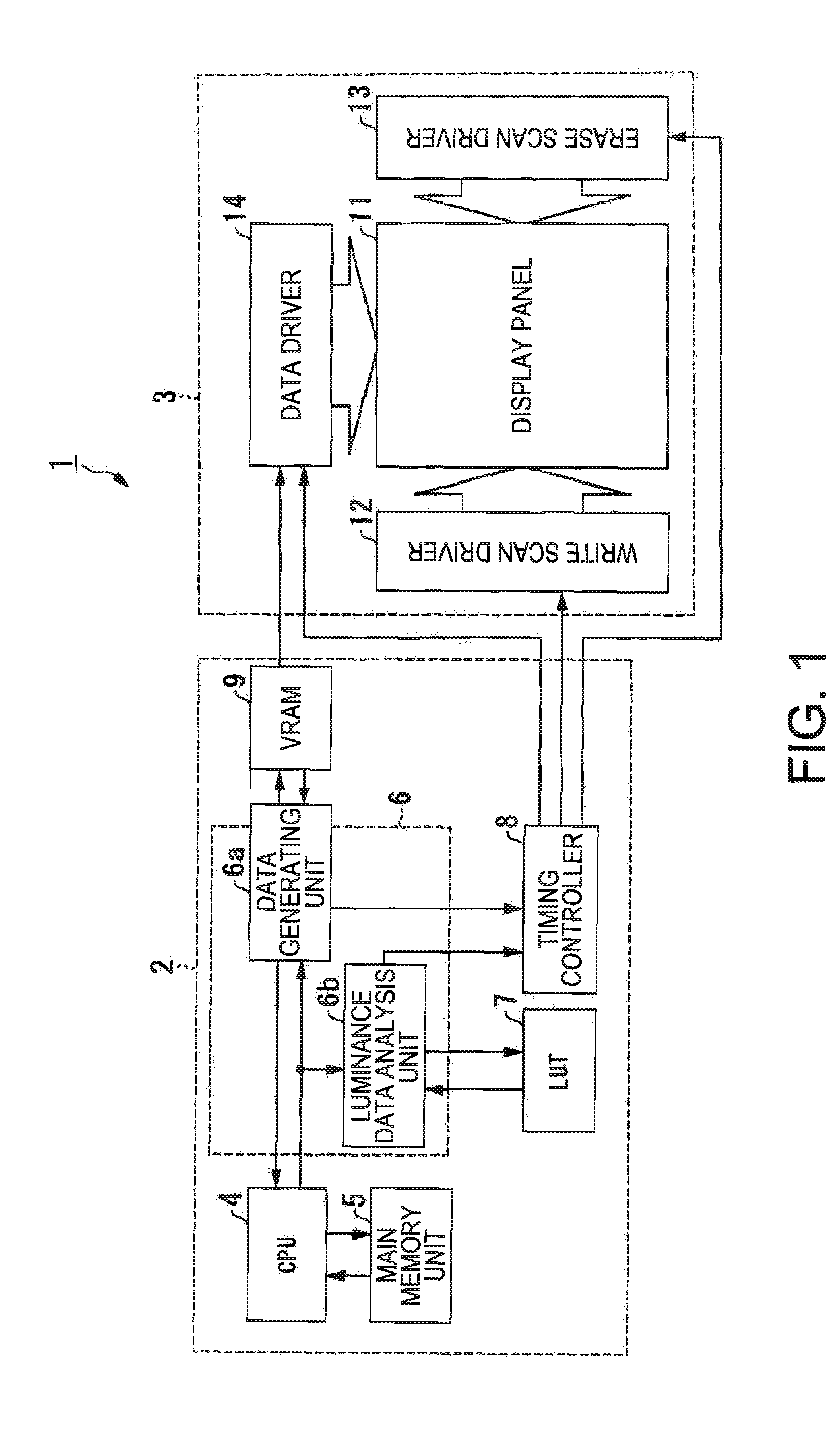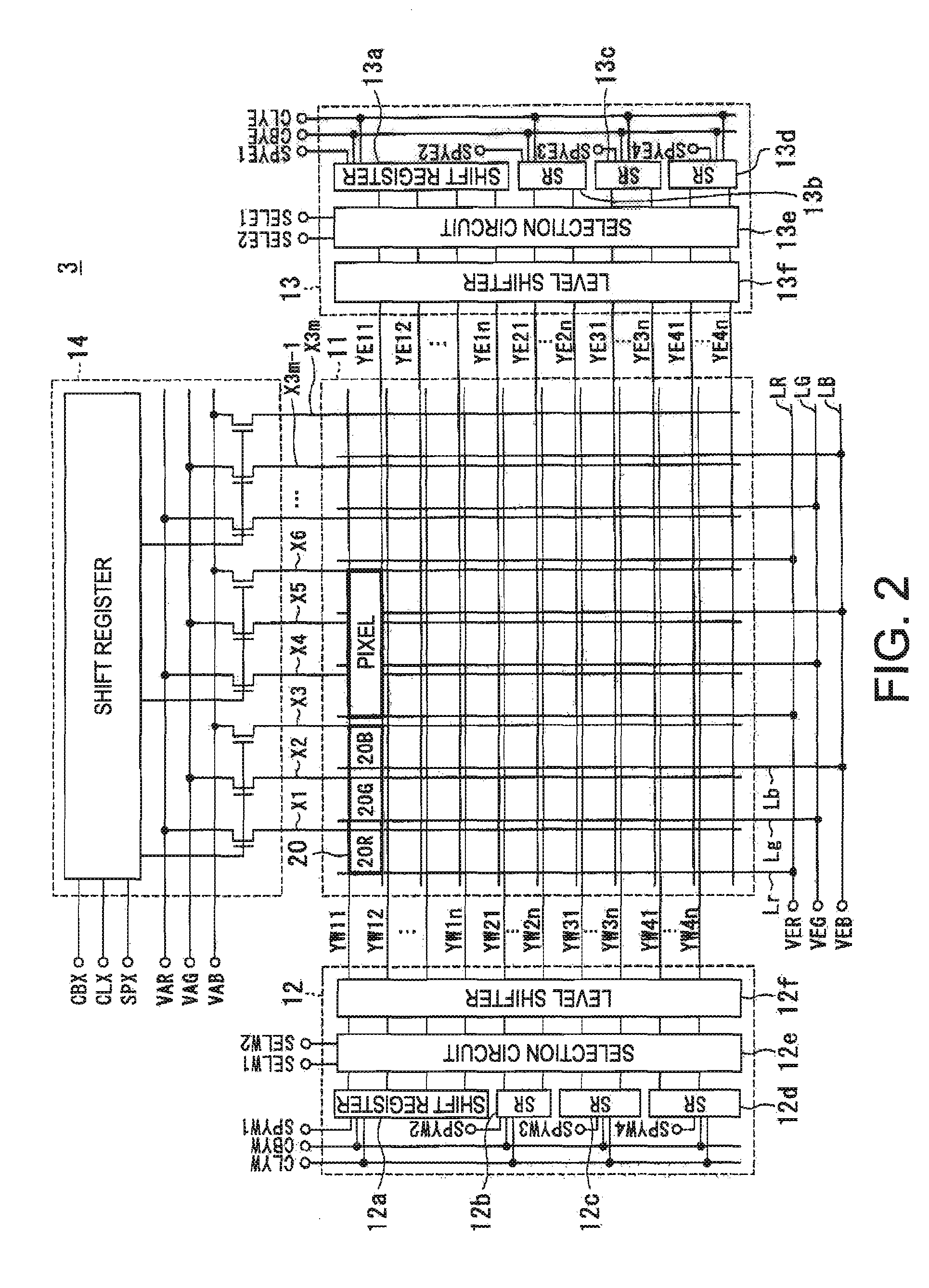Electro-optical device, method for driving electro-optical device, and electronic apparatus
a technology of electrooptical devices and optical devices, applied in the direction of instruments, static indicating devices, etc., can solve problems such as complicated signal processing, and achieve the effects of high quality display, high contrast, and high display quality
- Summary
- Abstract
- Description
- Claims
- Application Information
AI Technical Summary
Benefits of technology
Problems solved by technology
Method used
Image
Examples
first embodiment
[0072]FIG. 1 is a block diagram illustrating an electrical structure of an electro-optical device according to a first embodiment of the invention. As the electro-optical device, an organic EL device is exemplified to describe below. Referring to FIG. 1, an organic EL device 1 as the electro-optical device includes a peripheral drive device 2 and a display panel unit 3. The peripheral drive device 2 includes a central processing unit (CPU) 4, a main memory unit 5, a graphics controller 6, a lookup table (LUT) 7, a timing controller 8 and a video RAM (VRAM) 9. The CPU 4 may be replaced with a microprocessor unit (MPU). The display panel unit 3 includes a display panel 1, a write scan driver 12, an erase scan driver 13, and a data driver 14.
[0073]The CPU included in the peripheral drive device 2 reads image data stored in the main memory unit 5, carries out various types of processing, such as expansion, with the main memory unit 5, and outputs processed data to the graphics controlle...
second embodiment
[0148]Next, an electro-optical device according to a second embodiment of the invention will be described. In this embodiment, an organic EL device is exemplified as the electro-optical device to describe. The electro-optical device according to the embodiment has almost the same structure as a whole as the electro-optical device of the first embodiment shown in FIG. 1. However, in the electro-optical device according to this embodiment, internal structures of which corresponding to the write scan driver 12 and the erase scan driver 13, and a signal output to which corresponding to the write scan driver 12 and the erase scan driver 13 from the timing controller 8 are different from those in the first embodiment. As for a description below, structural elements common to those of the electro-optical device 1 of the first embodiment are given the same numerals, and differences from the first embodiment will be explained.
[0149][Display Panel Unit 3]
[0150]FIG. 12 is a block diagram illus...
third embodiment
[0179]FIGS. 14A through 14C are diagrams for explaining a method for driving an electro-optical device according to a third embodiment of the invention. In these diagrams, the horizontal direction indicates a lapse of time and the vertical direction indicates the scan direction of the scan lines as those in FIGS. 8A through 8C. FIGS. 14A through 14C show periods for light-emission and non-light-emission of the organic EL elements 25R, 25G, and 25B with a light-emission area of 10%, 50% and 100%, respectively. They schematically show the relationship between an area on which a pixel is provided (display area of the display panel 11) when the light-emission area occupies 10%, 50% and 100% of the display and the light-emission area.
[0180]As shown in FIGS. 14A through 14C, in this embodiment, a write period to write the analog image signals VAR, VAG, and VAB to each pixel by driving the write scan lines YW11 to YW1n, YW21 to YW2n, YW31 to YW3n, and YW41 to YW4n, and a control period to ...
PUM
 Login to View More
Login to View More Abstract
Description
Claims
Application Information
 Login to View More
Login to View More - Generate Ideas
- Intellectual Property
- Life Sciences
- Materials
- Tech Scout
- Unparalleled Data Quality
- Higher Quality Content
- 60% Fewer Hallucinations
Browse by: Latest US Patents, China's latest patents, Technical Efficacy Thesaurus, Application Domain, Technology Topic, Popular Technical Reports.
© 2025 PatSnap. All rights reserved.Legal|Privacy policy|Modern Slavery Act Transparency Statement|Sitemap|About US| Contact US: help@patsnap.com



